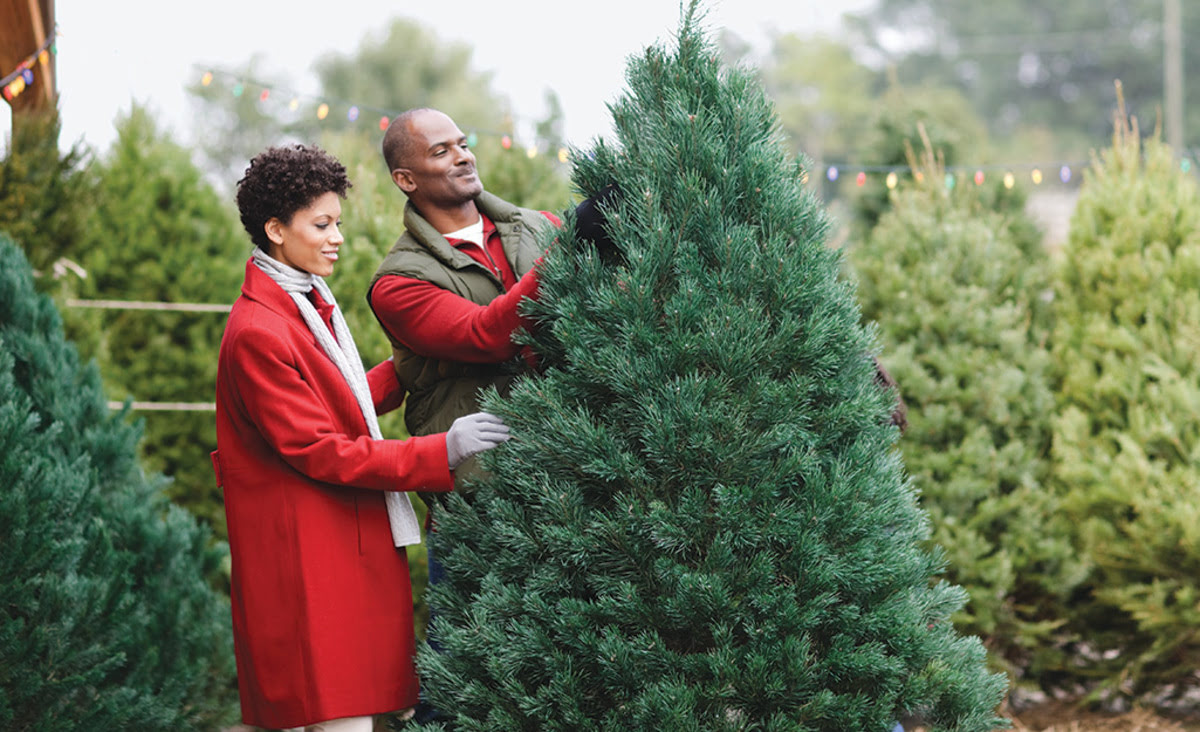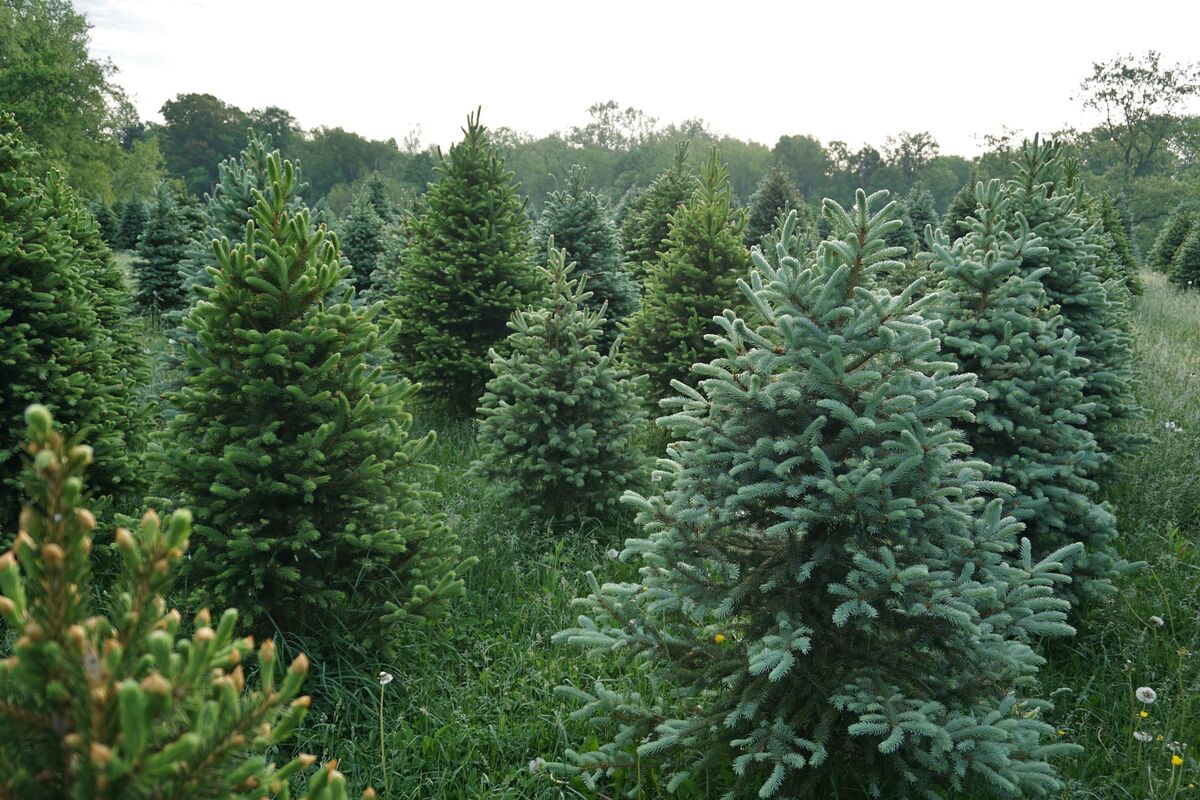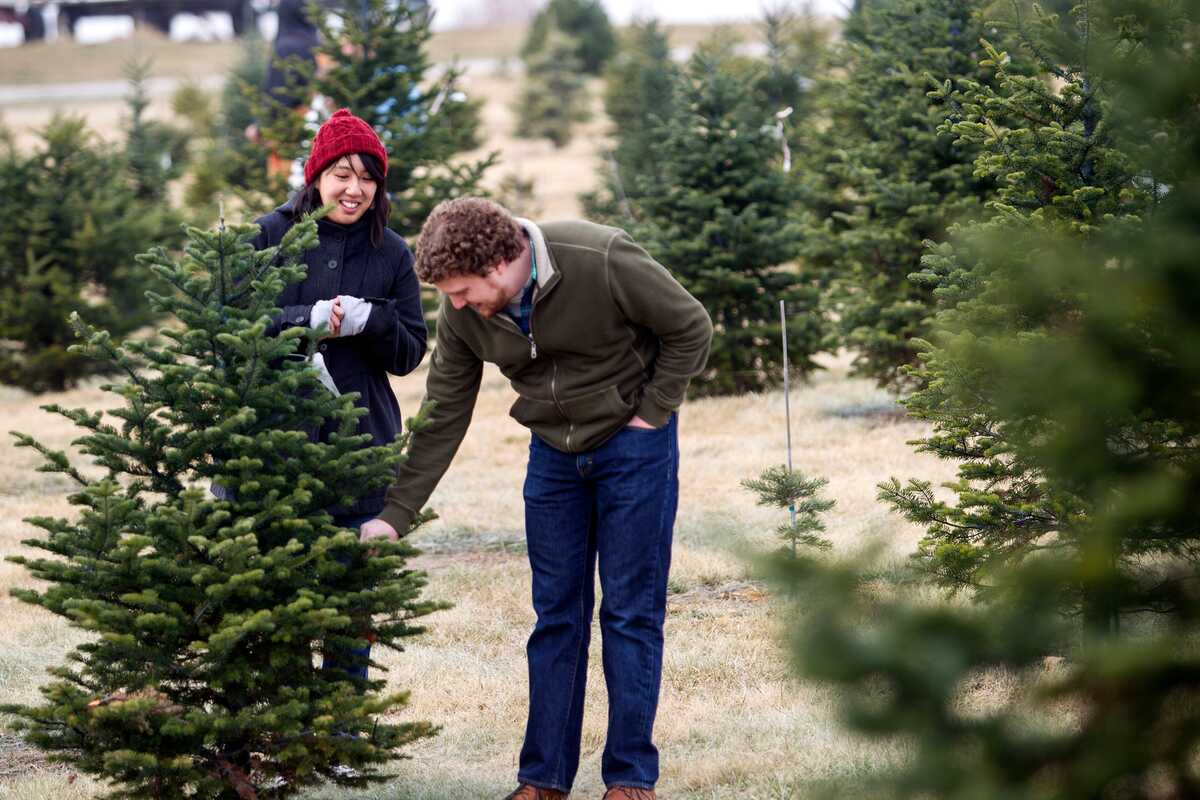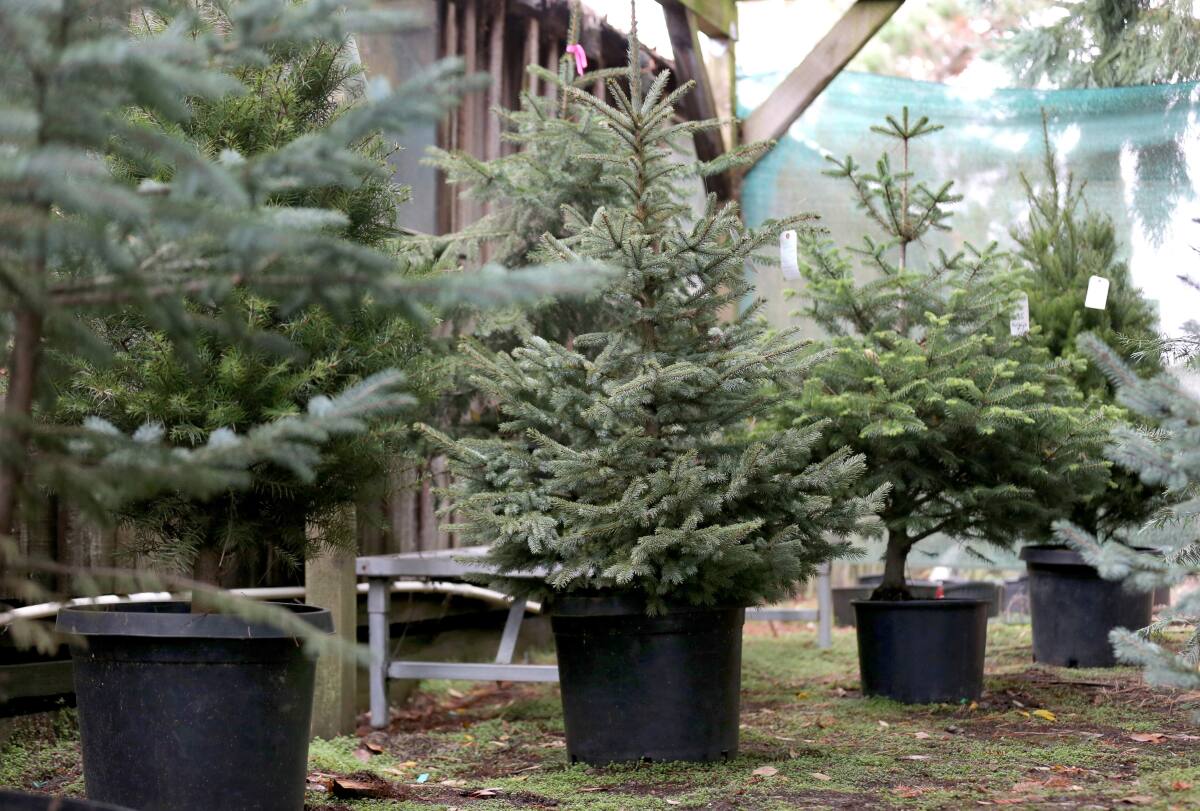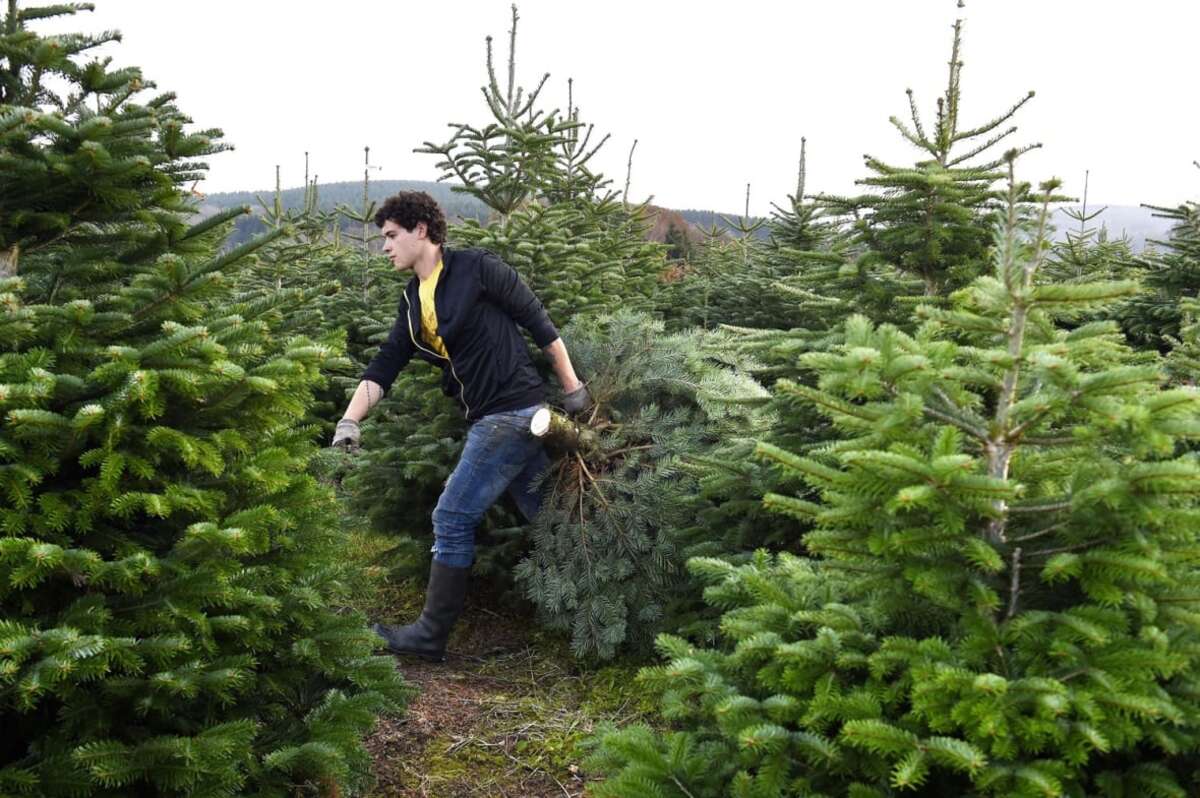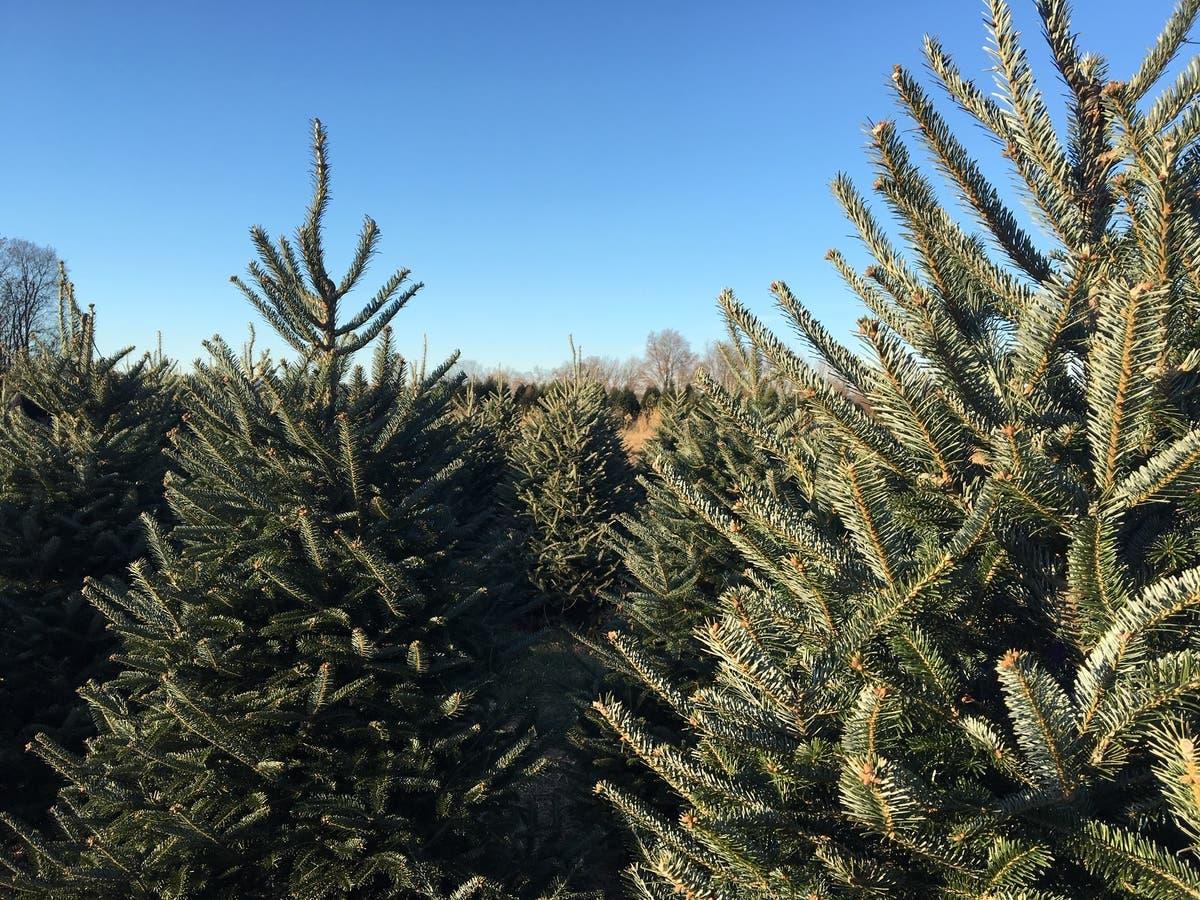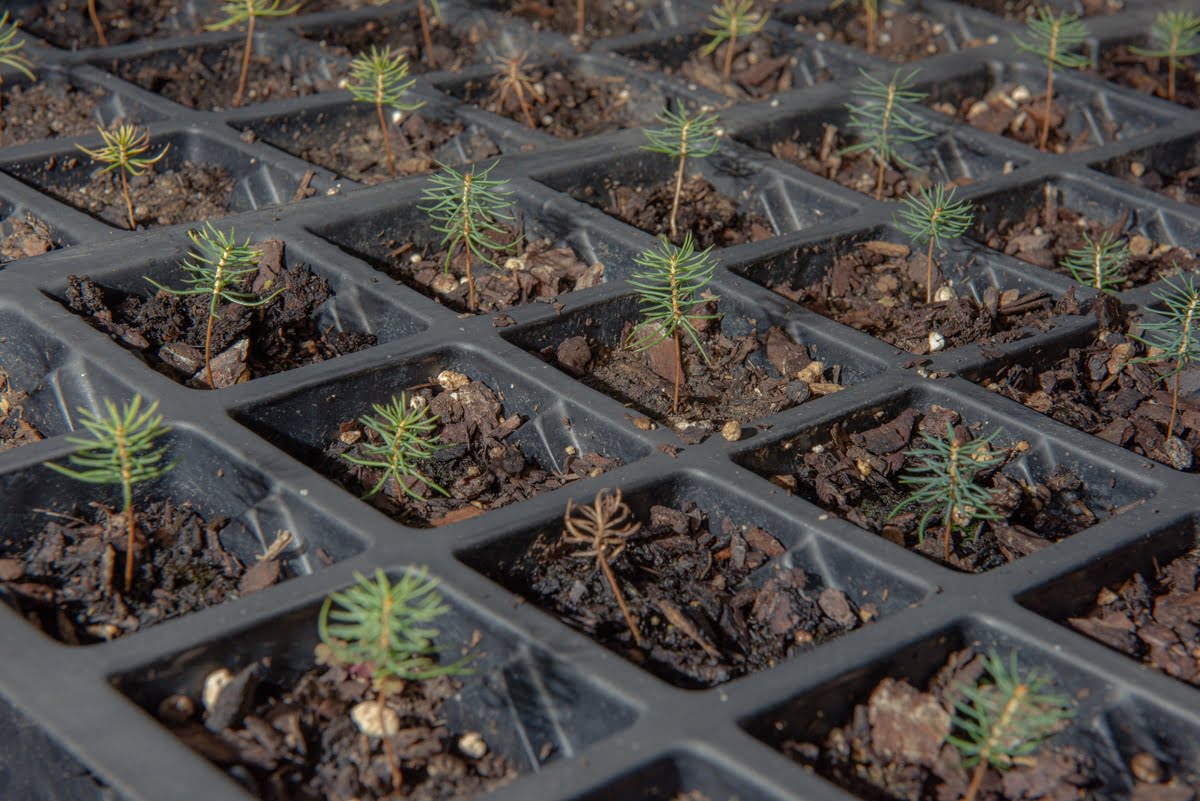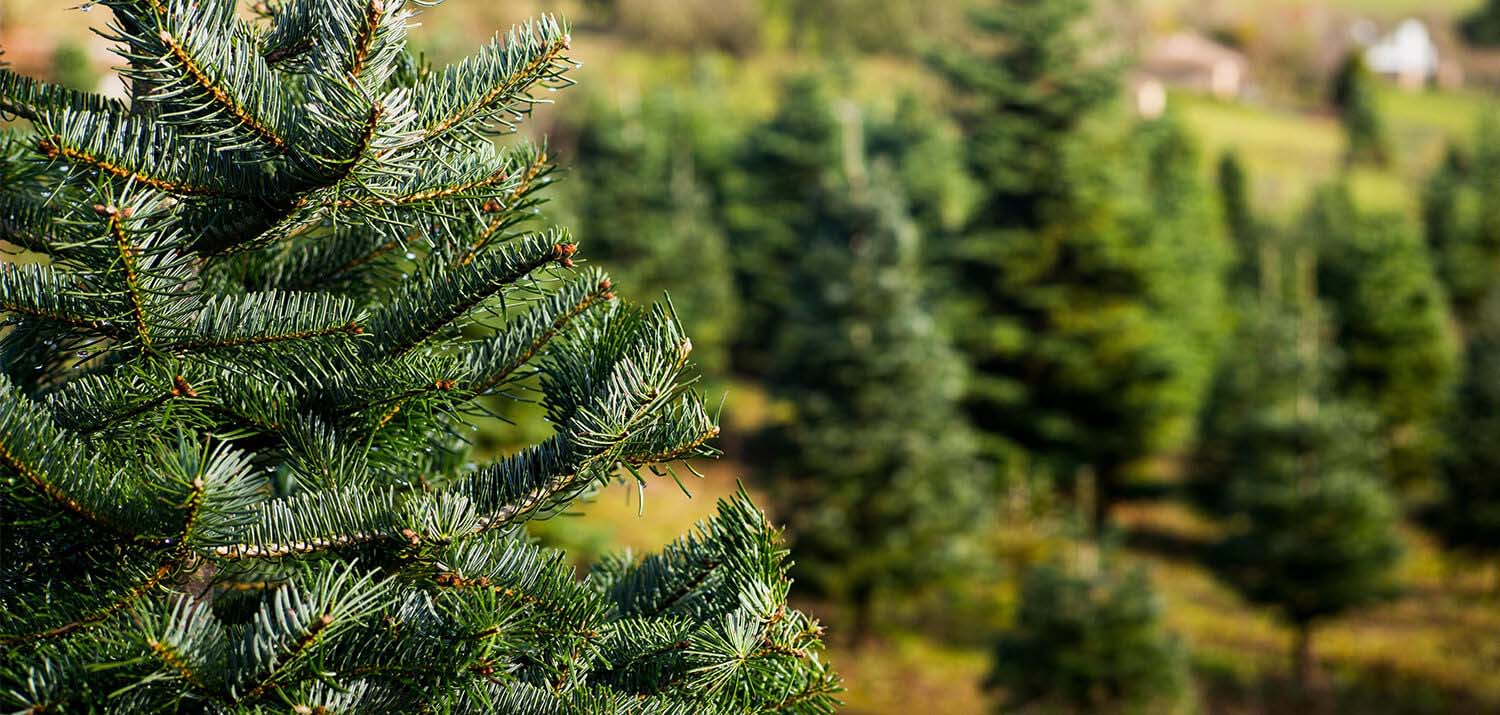Home>Gardening News and Trends>Latest News>Why Christmas Trees Arent Perfect


Latest News
Why Christmas Trees Arent Perfect
Modified: January 22, 2024
Discover the latest news on why Christmas trees aren't perfect and get insights into the charming imperfections that make them truly special.
(Many of the links in this article redirect to a specific reviewed product. Your purchase of these products through affiliate links helps to generate commission for Chicagolandgardening.com, at no extra cost. Learn more)
Table of Contents
- Introduction
- Historical Background of Christmas Trees
- The Symbolism of Imperfection
- The Charm of Natural Christmas Trees
- Environmental Considerations of Real Christmas Trees
- Artificial Christmas Trees: A Perfect Alternative?
- Embracing Imperfection: The Beauty of Handmade Ornaments
- Tips for Decorating a Not-So-Perfect Christmas Tree
- Conclusion
Introduction
Christmas is a time of joy, celebration, and the beauty of traditions. One of the most cherished symbols of the season is the Christmas tree – a majestic centerpiece adorned with lights, ornaments, and the love of family and friends. However, if you’ve ever taken a closer look at a real Christmas tree, you may have noticed one thing: it’s not perfect.
The concept of a “perfect” Christmas tree, with uniform branches and flawless symmetry, has been ingrained in our minds by perfectly manicured trees seen in holiday movies and department store displays. But the reality is that nature rarely produces such perfection, and that’s precisely what makes real Christmas trees so special.
Throughout history, Christmas trees have been a symbol of life, hope, and renewal. Their imperfections remind us of the imperfect nature of the world we live in and the beauty that comes from embracing it. In this article, we will explore the historical background of Christmas trees, the symbolism of imperfection, the charm of natural Christmas trees, and the environmental considerations of both real and artificial trees.
Moreover, let us not forget the joy and nostalgia of decorating a not-so-perfect Christmas tree. The handmade ornaments, the memories they hold, and the creativity they inspire can bring a unique and personal touch to the holiday season.
So, let’s delve into the world of Christmas trees and discover why imperfection is not only acceptable but also a cherished aspect of this beloved tradition.
Historical Background of Christmas Trees
The tradition of using evergreen trees as part of winter celebrations dates back centuries. The ancient Egyptians, Romans, and Vikings all incorporated evergreen branches into their festivities as a symbol of life and rebirth during the dark and cold winter months.
However, it was in Germany during the 16th century that the modern concept of the Christmas tree began to take shape. The German tradition of “Paradise Trees” involved bringing evergreen trees indoors and decorating them with fruits, nuts, and candles to celebrate the birth of Jesus Christ.
In the 18th century, German settlers brought this cherished tradition to North America, where it gradually gained popularity. Early American colonists, however, were not as keen on adopting the “pagan” symbol initially. It wasn’t until the mid-19th century, after the publication of a drawing depicting Queen Victoria and Prince Albert celebrating around a decorated Christmas tree, that the tradition truly took hold in the English-speaking world.
From then on, the popularity of Christmas trees soared, and different cultures around the world embraced the tradition with their own unique customs and decorations. Today, the Christmas tree is an iconic symbol of the holiday season globally.
Throughout its history, the Christmas tree has represented various meanings and symbols. It symbolizes life and vitality during a time when nature seems dormant. The evergreen nature of the tree is a reminder of the cyclical and eternal nature of life. And its triangular shape is often interpreted as representing the Holy Trinity.
This historical background not only showcases the rich cultural significance of Christmas trees but also highlights their connection to nature and the imperfections that come with it. Let us now explore the symbolism of imperfection and why it adds to the charm of real Christmas trees.
The Symbolism of Imperfection
In a world that often values perfection and flawlessness, the presence of imperfections in a Christmas tree may seem out of place. However, these imperfections actually carry profound symbolism and meaning.
A real Christmas tree, with its uneven branches, bare spots, and crooked trunk, reminds us that perfection is not the ultimate goal. It serves as a gentle reminder that beauty can exist in imperfection and that flaws add character and authenticity to our lives.
Just as each individual is unique and imperfect in their own way, every Christmas tree has its own distinct charm. The branches may not be evenly spaced, but they hold the treasured ornaments and memories of families for generations. The bare spots allow the lights to shine through, creating a magical atmosphere that cannot be replicated by artificial trees.
Moreover, the imperfections in a real tree serve as a metaphor for the imperfect world we live in. They remind us that life is not always neat, tidy, or predictable, but still, it is beautiful. It is a symbol of resilience and the ability to find joy and celebration even in the face of imperfection.
When we embrace the imperfections of a Christmas tree, we are also embracing the imperfections within ourselves. It encourages us to be more accepting and compassionate towards our own flaws and the flaws of others. It teaches us to find beauty in the uniqueness of each individual and celebrates diversity.
The symbolism of imperfection extends beyond the physical appearance of the tree. It also applies to the act of decorating the tree itself. Handmade ornaments, quirky decorations, and mismatched lights add a personal touch and tell a story. It is a reminder that the most cherished memories are often the ones that are not picture-perfect, but rather filled with laughter, love, and authenticity.
So, as you gather around your Christmas tree this holiday season, take a moment to appreciate and celebrate its imperfections. They are a testament to the beauty that lies in embracing the uniqueness of ourselves and the world around us.
The Charm of Natural Christmas Trees
There is something undeniably enchanting about a natural Christmas tree. Its scent fills the air, and its vibrant green branches create a sense of warmth and coziness in our homes. While artificial trees may offer convenience, they often lack the charm and authenticity that come with a real tree.
One of the main reasons natural Christmas trees hold such appeal is their connection to nature. Bringing a real tree into our homes allows us to bring a piece of the outdoors inside, even during the coldest and darkest months of the year. It serves as a reminder of the beauty and resilience of nature and the importance of preserving our environment.
Furthermore, every natural Christmas tree is unique. No two trees are exactly alike, and that’s what adds to their charm. Each tree has its own distinctive shape, character, and story. Decorating a real tree becomes a celebration of its individuality, as we carefully place ornaments and tinsel on its branches, accentuating its natural beauty.
Another enchanting aspect of natural Christmas trees is the experience of selecting one. Whether you visit a local tree farm or venture into the forest to cut down your own tree, this tradition creates lifelong memories. The process of searching for the perfect tree, filling the air with laughter and excitement, is a cherished part of the holiday season for many families.
Moreover, the maintenance of a natural tree can be seen as part of its charm. Watering the tree to keep it fresh, vacuuming fallen pine needles, and occasionally reshaping the branches all contribute to the sense of love and care that goes into nurturing a real tree.
While artificial trees may provide a uniform and symmetrical appearance, they lack the authenticity and sensory experience that only a natural tree can offer. The texture of the branches, the sound of needles rustling, and the earthy scent all add to the ambiance and create a truly immersive festive atmosphere.
Ultimately, the charm of natural Christmas trees lies in their ability to bring nature’s beauty into our homes, their individuality, and the cherished memories associated with selecting and decorating them. So, this holiday season, consider opting for a real tree and immerse yourself in the enchanting charm it brings to your festive celebrations.
Environmental Considerations of Real Christmas Trees
With increasing concerns about the environment, it is important to consider the ecological impact of our holiday traditions. When it comes to Christmas trees, there are valid arguments both for and against real trees. While some may argue that artificial trees are more sustainable, there are strong environmental considerations in favor of choosing a real tree.
One of the key environmental benefits of real Christmas trees is that they are a renewable resource. Christmas tree farms are specifically cultivated for this purpose, with new trees planted to replace those that are harvested. These operations help support local economies and preserve open spaces that may otherwise be developed.
Unlike artificial trees which are made from non-biodegradable materials, real trees are recyclable and biodegradable. At the end of the holiday season, real trees can be repurposed as mulch, soil erosion barriers, or even habitat for wildlife. Many municipalities also offer tree recycling programs, allowing trees to be turned into beneficial products like wood chips for landscaping.
Additionally, real trees have a lower carbon footprint compared to artificial trees. Although they require water and energy to grow, transport, and maintain, they are often sourced locally and do not require extensive manufacturing processes or long-distance shipping as artificial trees do. This reduces the overall emissions associated with their production and transportation.
Moreover, real trees provide multiple environmental benefits during their growth. They absorb carbon dioxide from the atmosphere and release oxygen, improving air quality. They also help filter pollutants and reduce soil erosion, contributing to ecosystem health.
It is important to note that the environmental impact of real trees can be further minimized by adopting sustainable practices. This includes purchasing trees from certified sustainable farms, using organic and biodegradable decorations, and disposing of the tree responsibly after the holiday season.
Ultimately, when it comes to the environmental considerations of Christmas trees, real trees offer a more sustainable and eco-friendly option. They support local economies, promote renewable resources, and can be recycled or repurposed after use. By choosing a real tree, we can celebrate the holiday season while also being mindful of our impact on the planet.
Artificial Christmas Trees: A Perfect Alternative?
For those who prioritize convenience and longevity, artificial Christmas trees may seem like an appealing option. They offer a perfect symmetrical shape, require minimal maintenance, and can be reused year after year. However, it is important to consider both the advantages and drawbacks of artificial trees when evaluating them as an alternative to real trees.
One of the main advantages of artificial Christmas trees is their durability. These trees can last for many years with proper care, eliminating the need to purchase a new tree annually. This can be cost-effective and reduce waste in the long run.
Artificial trees also offer a uniform appearance. They come in a variety of styles and sizes to suit any preference, and their branches are designed to hold ornaments securely in place. This can make decorating the tree easier and create a visually pleasing, picture-perfect centerpiece.
Furthermore, artificial trees eliminate the mess associated with real trees. There are no fallen needles to clean up, and watering is not required. This can be particularly beneficial for individuals with allergies or respiratory sensitivities.
However, it is important to consider the environmental impact of artificial trees. They are typically made from non-biodegradable materials such as PVC (polyvinyl chloride), which can be harmful to the environment both during production and disposal. The manufacturing process of artificial trees also requires substantial energy and resources.
Additionally, artificial trees are often imported from overseas, resulting in long-distance shipping and associated emissions. This further contributes to their carbon footprint and ecological impact.
Another drawback of artificial trees is their limited biodegradability. When disposed of, they do not decompose readily and can take hundreds of years to break down in landfills. This contributes to the growing problem of waste accumulation.
While artificial trees may offer convenience and a visually appealing option, they come with significant environmental drawbacks. It is important to consider the long-term sustainability and ecological impact when choosing between real and artificial trees.
Ultimately, the decision between a real or artificial tree depends on individual preferences and priorities. For those who value the authenticity, charm, and environmental benefits of real trees, the imperfections they embody are part of the holiday spirit. However, for those who prioritize convenience and longevity and are mindful of the environmental drawbacks, artificial trees may be a suitable alternative.
Embracing Imperfection: The Beauty of Handmade Ornaments
When it comes to decorating a not-so-perfect Christmas tree, one way to add charm and personality is through the use of handmade ornaments. These beautiful creations, often crafted with love and care, bring a unique touch to the holiday season.
Handmade ornaments carry a certain warmth and authenticity that mass-produced decorations lack. The imperfections in their design and craftsmanship make them truly special. Whether it’s a crooked stitch, a slightly uneven shape, or the use of mismatched materials, these imperfections add to their beauty and tell a story.
Creating handmade ornaments can be a fun and meaningful activity for individuals and families alike. It allows for creativity and personal expression while embracing the joy of the holiday season. Whether it’s knitting, sewing, painting, or crafting with various materials, there are endless possibilities to explore.
Handmade ornaments also hold a sentimental value that cannot be replicated. They often become treasured heirlooms, passed down from generation to generation. Each ornament carries the memories of the person who created it, and they become a part of the family’s holiday traditions and celebrations.
Moreover, handmade ornaments provide an opportunity for repurposing and upcycling materials, reducing waste, and promoting sustainable practices. Recycled fabrics, buttons, beads, and other materials can be transformed into unique and beautiful decorations, giving them a new life and purpose.
When it comes to handmade ornaments, the imperfections are what make them truly special. They remind us that perfection is not necessary for something to be beautiful and meaningful. The uneven stitches, the variations in color, and the individuality of each ornament add character and authenticity to our holiday decorations.
These unique creations also serve as a reminder of our own imperfections and the beauty that comes from embracing them. Just as a not-so-perfect Christmas tree can be a symbol of love and celebration, the imperfections in handmade ornaments reflect our own humanity and the joy that can be found in the imperfect aspects of life.
So, this holiday season, consider adding some handmade ornaments to your tree. Embrace imperfection, celebrate creativity, and let the beauty of these unique creations light up your home with holiday cheer.
Tips for Decorating a Not-So-Perfect Christmas Tree
Decorating a not-so-perfect Christmas tree can be a fun and creative endeavor that allows you to embrace the uniqueness of your tree. Here are some tips to help you make the most of your tree’s imperfections and create a stunning and personalized holiday display:
- Choose the right-sized ornaments: Scale your ornaments to the size of the branches on your tree. Large, heavy ornaments may weigh down sparse branches, while small and delicate ornaments can get lost on fuller branches. Finding the right balance will help enhance the overall look of your tree.
- Focus on strategic placement: Instead of trying to fill every nook and cranny, concentrate your decorations on the fuller parts of the tree. Highlight its strengths by placing ornaments and lights where they can shine the brightest.
- Use garlands and ribbons: Garlands and ribbons are a great way to add depth and fullness to a not-so-perfect tree. Wrap them around the branches, cascading down from the top to create a visually appealing effect.
- Embrace a theme: Choose a theme that complements your tree’s natural charm. Whether it’s rustic, vintage, or whimsical, selecting a theme will bring cohesiveness to your decorations, making your tree look intentional and thoughtfully styled.
- Incorporate natural elements: Enhance the organic feel of your tree by incorporating natural elements into your decorations. Pinecones, dried berries, twigs, or even fresh greenery can add texture and bring a touch of nature to your tree.
- Get creative with DIY ornaments: Instead of relying solely on store-bought ornaments, unleash your creativity and make your own. Handmade ornaments, crafted from various materials like paper, fabric, or recycled materials, can add a personal and whimsical touch to your tree.
- Consider unconventional decorations: Think outside the box and explore unique decorating ideas. Vintage toys, sentimental trinkets, or quirky collectibles can add a touch of nostalgia and individuality to your tree, embracing its not-so-perfect charm.
- Layer and fill the gaps: Use layers of smaller ornaments, tinsel, or even artificial snow to fill any gaps and create a more full-bodied appearance. By strategically placing decorations, you can enhance the overall balance and visual appeal of your tree.
- Don’t forget the tree topper: Choose a tree topper that complements your tree’s style and size. Whether it’s a star, angel, or a creative DIY topper, it provides the perfect finishing touch and draws attention upwards.
- Enjoy the process: Most importantly, enjoy the process of decorating your not-so-perfect Christmas tree. Embrace the imperfections, celebrate your unique tree, and let the joy and spirit of the holiday season shine through.
Remember, decorating a Christmas tree should be a reflection of your personal style and creativity. Embrace the imperfections, have fun, and create a festive display that perfectly represents your holiday spirit.
Conclusion
The beauty of a Christmas tree lies not in its perfection, but in its imperfections. Real Christmas trees, with their unique shapes and quirks, embody the charm and authenticity that make the holiday season special. The historical significance and symbolism of imperfection remind us to embrace the imperfect aspects of our lives and find beauty in them.
When considering the environmental impact, real Christmas trees offer a sustainable choice. They are renewable, biodegradable, and contribute to local economies. They provide a connection to nature and the opportunity to reduce waste through recycling and repurposing.
While artificial trees may offer convenience and a uniform appearance, their production and disposal have a significant ecological footprint. However, personal preferences and circumstances may lead some to choose artificial trees for their longevity and low maintenance.
Whether you opt for a real or artificial tree, the beauty of handmade ornaments and thoughtful decorations can transform a not-so-perfect tree into a stunning centerpiece filled with personal meaning. Crafting and displaying unique ornaments brings a sense of creativity and nostalgia to the holiday season.
Ultimately, the joy of decorating a not-so-perfect Christmas tree lies in the process itself. By embracing imperfections, celebrating individuality, and finding creative solutions, we can create a holiday display that reflects our personal style and values.
So this holiday season, let us not be deterred by the pursuit of perfection. Instead, let us embrace the imperfect beauty of our Christmas trees, create cherished memories through handmade ornaments, and find joy in the uniqueness and charm that each tree and decoration brings. After all, the true spirit of Christmas resides not in perfection, but in love, warmth, and the joy of embracing the imperfections that make life truly beautiful.
